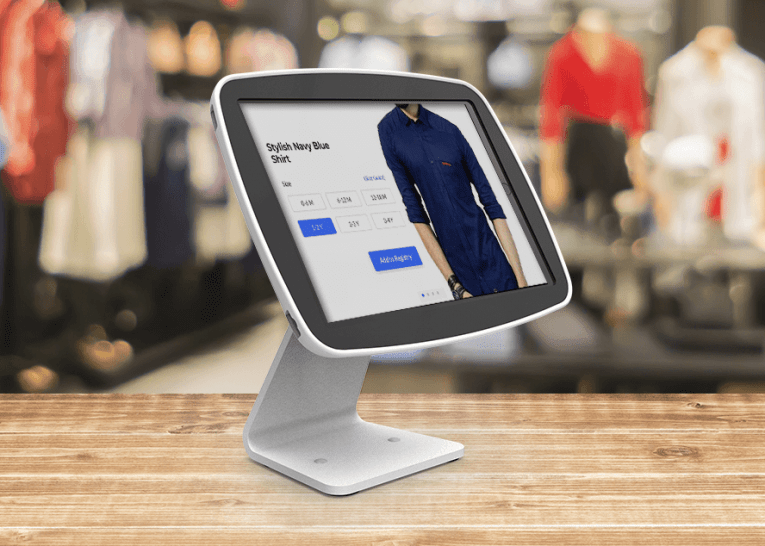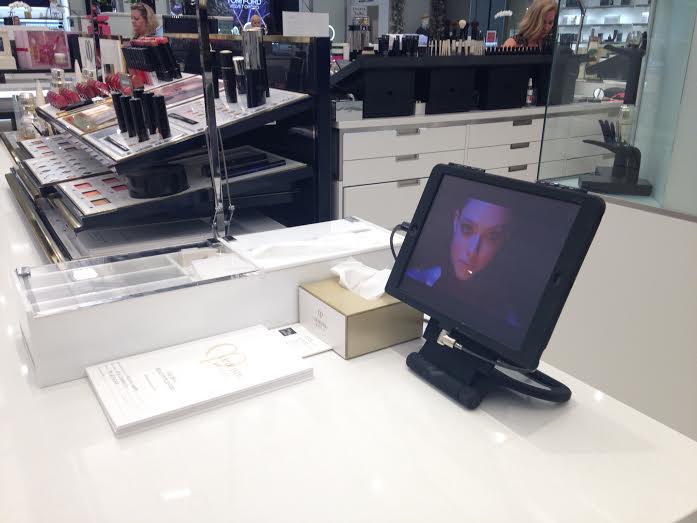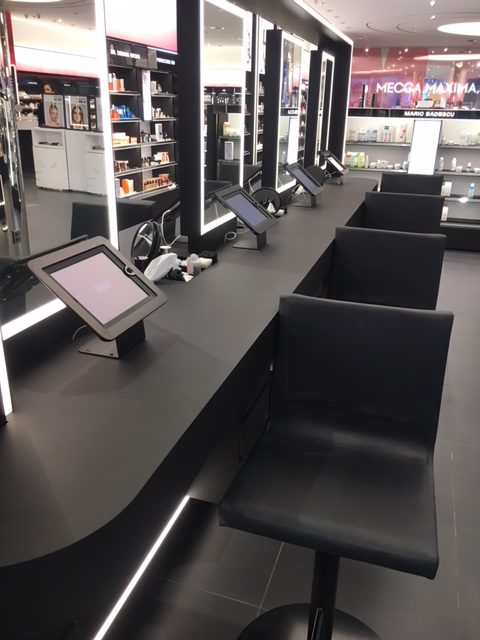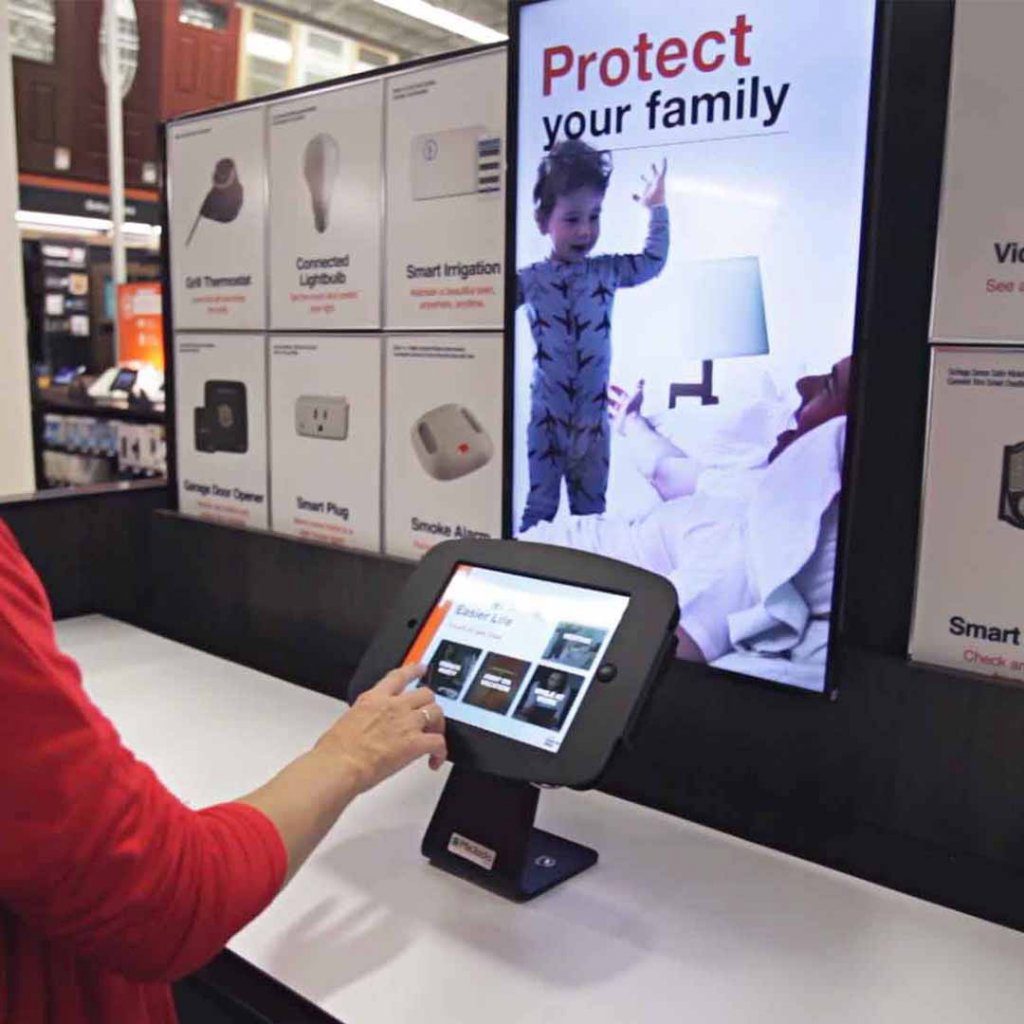
Adding digital in-store experiences without losing the human touch
Profusion of technological innovations and continuous changes in the retail industry make it crucial to add in-store experiences to help physical stores keep attracting customers.
How is this done while still maintaining the human touch at the same time?
Don’t lose focus on what matters

From the shop windows, before the customer even enters the store, up to the buying decision process, offering new real-life experiences to shoppers alleviates the brand. While Artificial Intelligence (AI) has helped retailers sharpen their inventory or predict customer behavior, amplified and increased realities allow buyers to try out the products they want to buy or use “scan and go” apps in order to pay effortlessly.
As described in our Complete Guide to Swift Customer Satisfaction, the continuous conversation with the customer must be strengthened in the store space. Through selling tools and fun in-store experiences brands can drive foot traffic to the store and allow visitors to express themselves through their choices as consumers.
But what seems to be an improved shopping experience can turn a store to a forest of screens and digital kiosks leaving the customer left to his own devices.
Those experiences must not be disconnected from major conversion factors, like emphasizing brand values, helping the customer in his search process to narrow down choices, etc.
Instead, a digital kiosk can help the customer better understand the brand’s identity, the store’s offer (what’s in the store and what can be purchased even if it is not currently in stock), customization possibilities, and guide him in the buying process. Any digital experience must be analyzed through the lens of how it influences consumer behavior and improves consumer decision process.

Cashless is not humanless
One quite extreme example is the deployment of Amazon Go stores, where the customers can actually check in with an app. This disruptive checkout free concept based on computer vision, sensors and deep learning does not only disturb the convenience stores panorama, but also revolutionizes customer’s behavior.
Despite the lack of cashiers, Amazon Go stores have many employees helping people, replacing items on shelves or checking IDs for liquor shoppers, etc. It feels nicer for a customer to enter a place that is vibrant and managed by a team dedicated to quality of service.
While the majority of buyers are making use of mobile applications to access numerous amounts of content before they actually buy, it has now become obvious that the ecosystem of any physical retailer has digital aspects and must integrate the omni channel approach. The main purpose is to maintain a competitive advantage and a better knowledge of your customer in a constantly-evolving industry.
Enhancing human interactivity
In-store digital experiences goal is to maximize the capabilities of the store’s employees in order to help convert and increase the average amount of purchases.

It can be done through virtual helpers and digital private shoppers who, when connected to the customer’s account on the company’s site, can analyze his profile and provide relevant products.
The store might offer instant smartphone notifications while in store, using localization and user’s preferences and purchase history. Those notification can engage the customer to ask an employee about a deal or a specific sale, instead of letting him look for himself.
Customers loyalty must be a major focus too. The store’s data must be used as much as possible in order to push the customer to convert during his visit. App-based loyalty programs can be very efficient when paired with in-store stimulus.
PwC Consumer Intelligence Series Survey
According to the latest PwC Consumer Intelligence Series survey conducted on 15,000 customers, even after numerous shopper-retailer interactions, the human touch matters as much as it did before. Almost 75% of the respondents said that even more human interaction was required in the future. For almost 65%, experience of the consumer is way more important than the quality and price of the product when a purchasing process decision is being made.
The percentage mentioned above should be a wake-up call to all the retailers and vendors as they need to emphasize on the ways to engage with the shoppers. Even though technology will always remain the main focus to the retailer’s capability to comprehend, predict and even influence the buyers behavior, none of these high-tech processes are possible without the human touch.

What is the future of retail?
Many studies track how the customers perceive the evolutions that retail stores are undergoing in order to capture their attention and empty their wallets. But the main question everybody wonders is “what is the future of retail?” Simply, the answer which almost anyone says is “nothing but network”.
Companies must build and rely on a network of point of contacts, gathering precious data and delivering authentically useful interactions with customers that will nurture and leverage customer knowledge (behavior, preferences, segmentation, anticipation).
The omnichannel network of interfaces that a customer interacts with during his journey with a brand are all crucial and play a part in the transformation that provides the flexibility to react and respond to the customer needs.
As important as the technology is in that scheme, the human quality of the experience must always have a sacred place, it is the strength of retail stores and the major connector of this network, leading to customer satisfaction.
